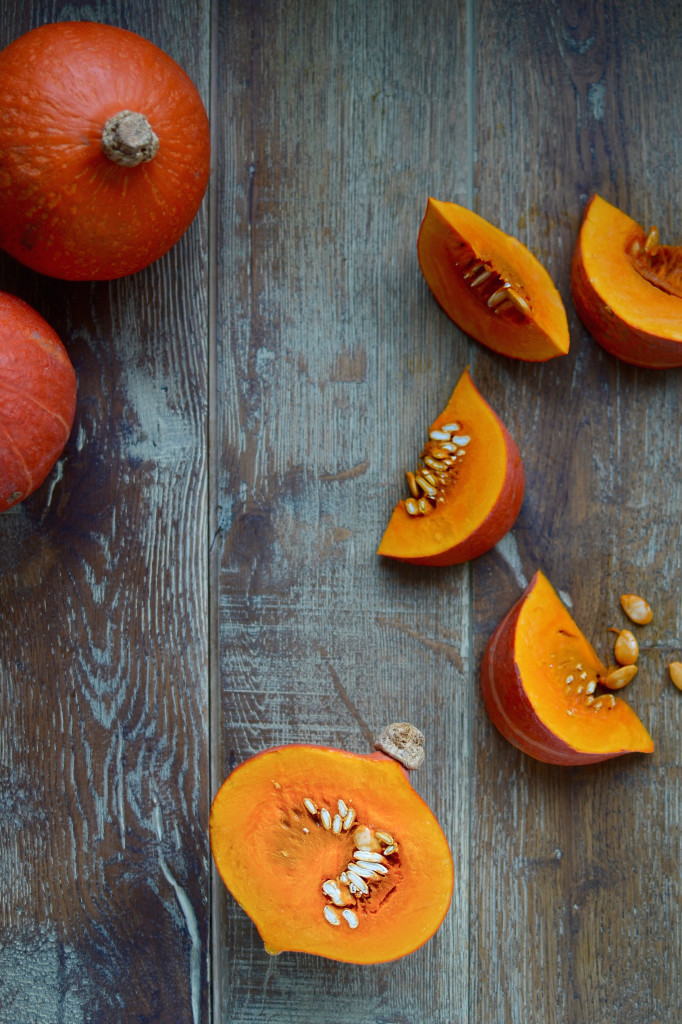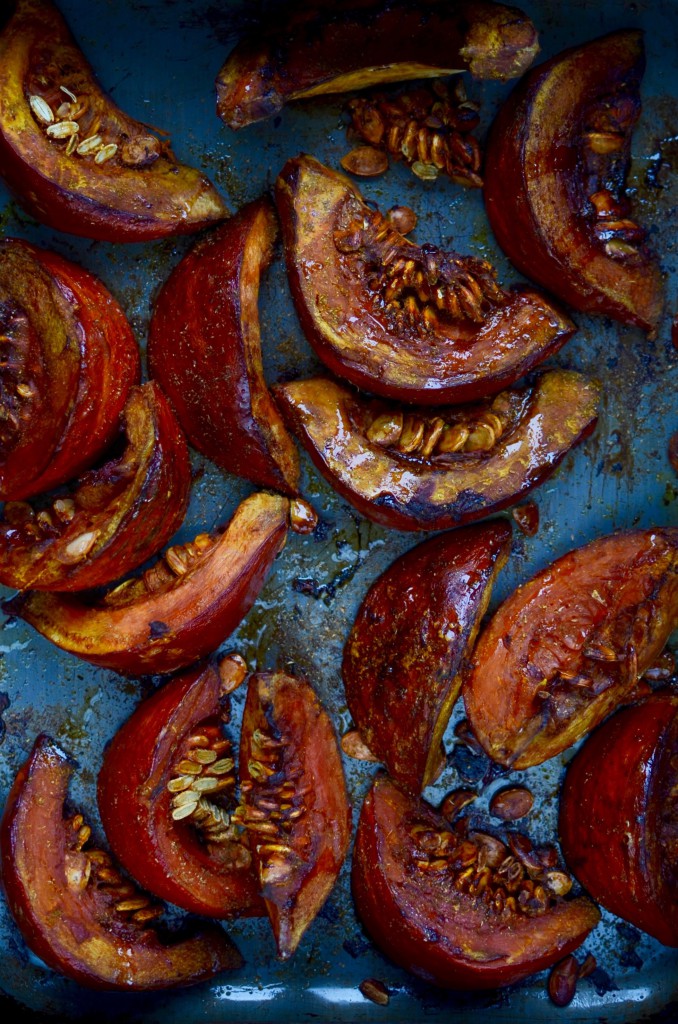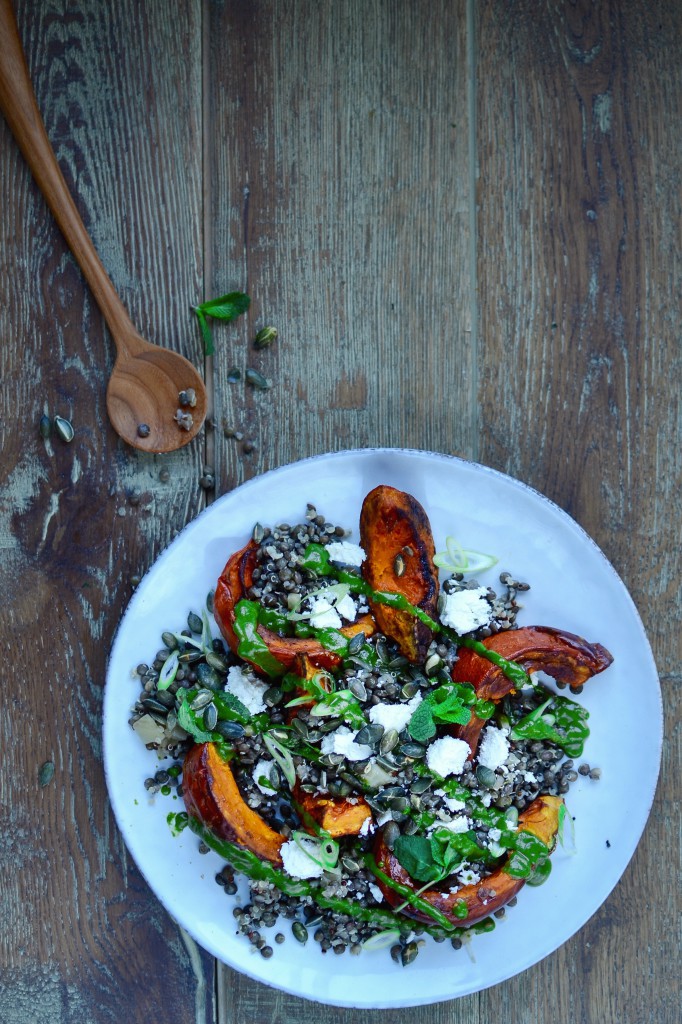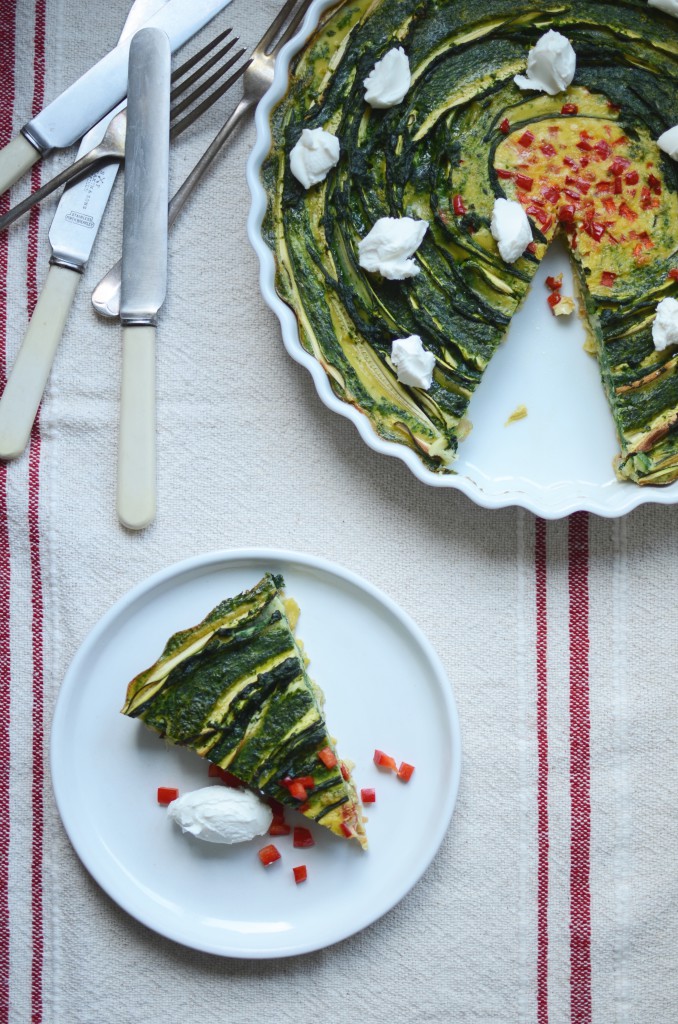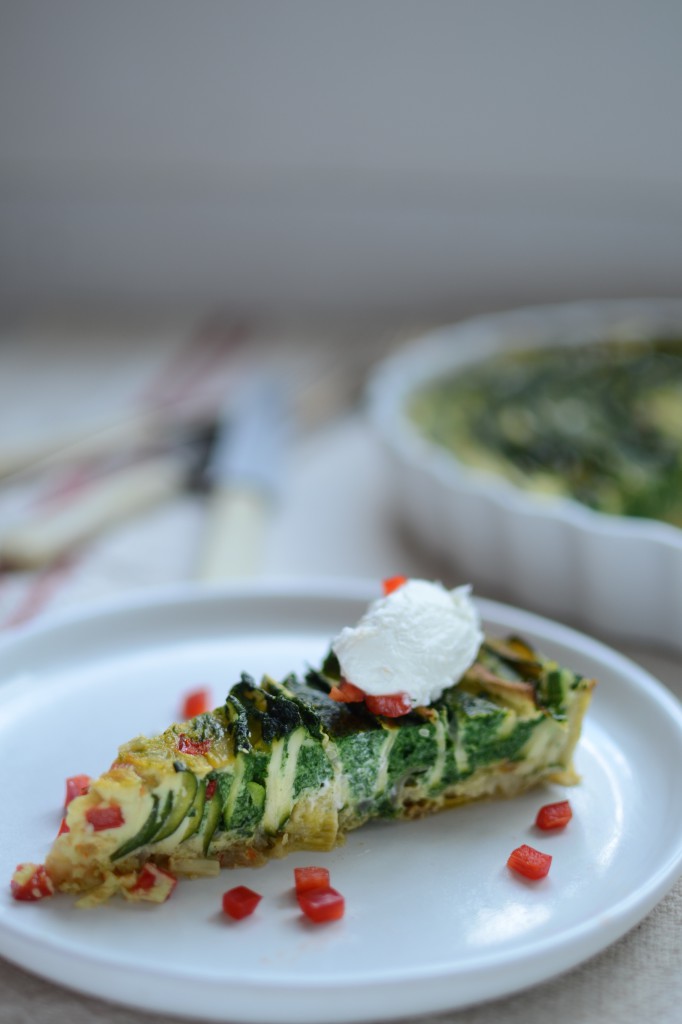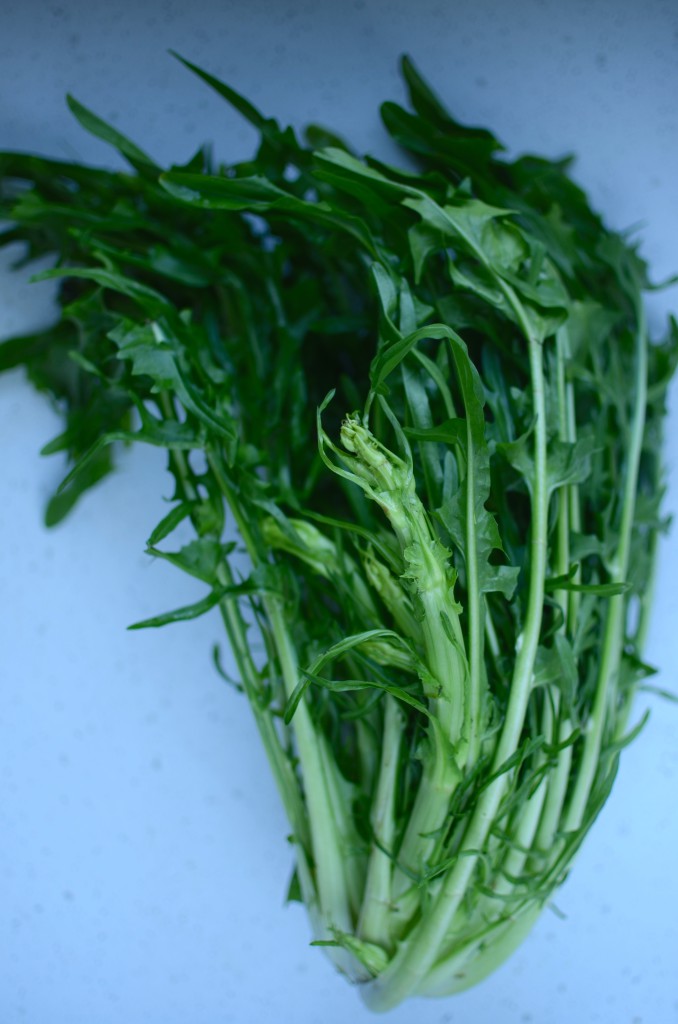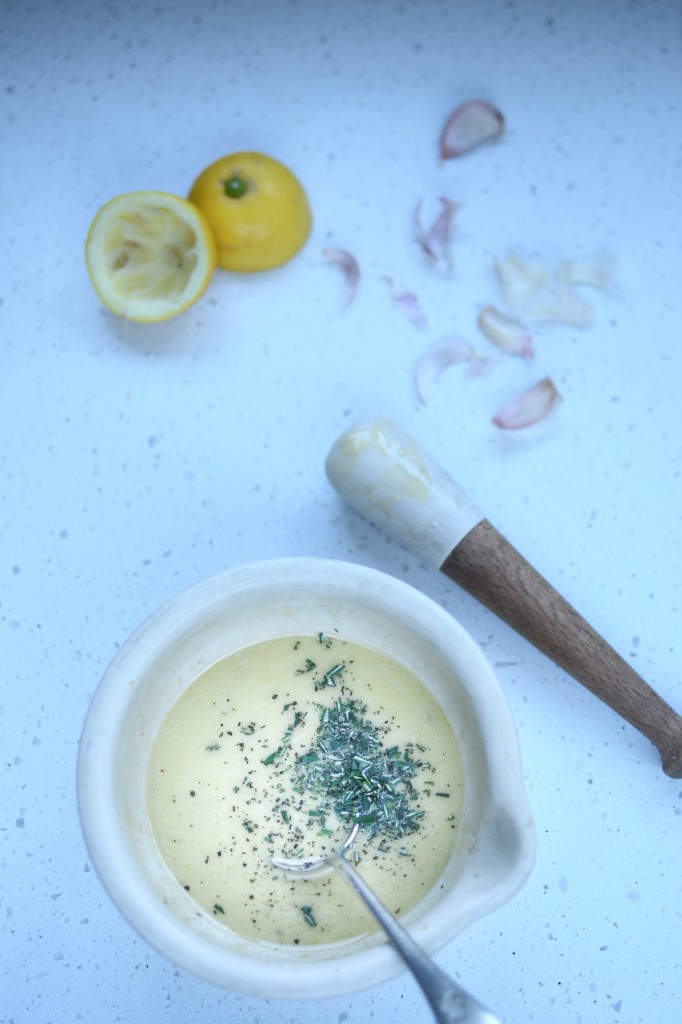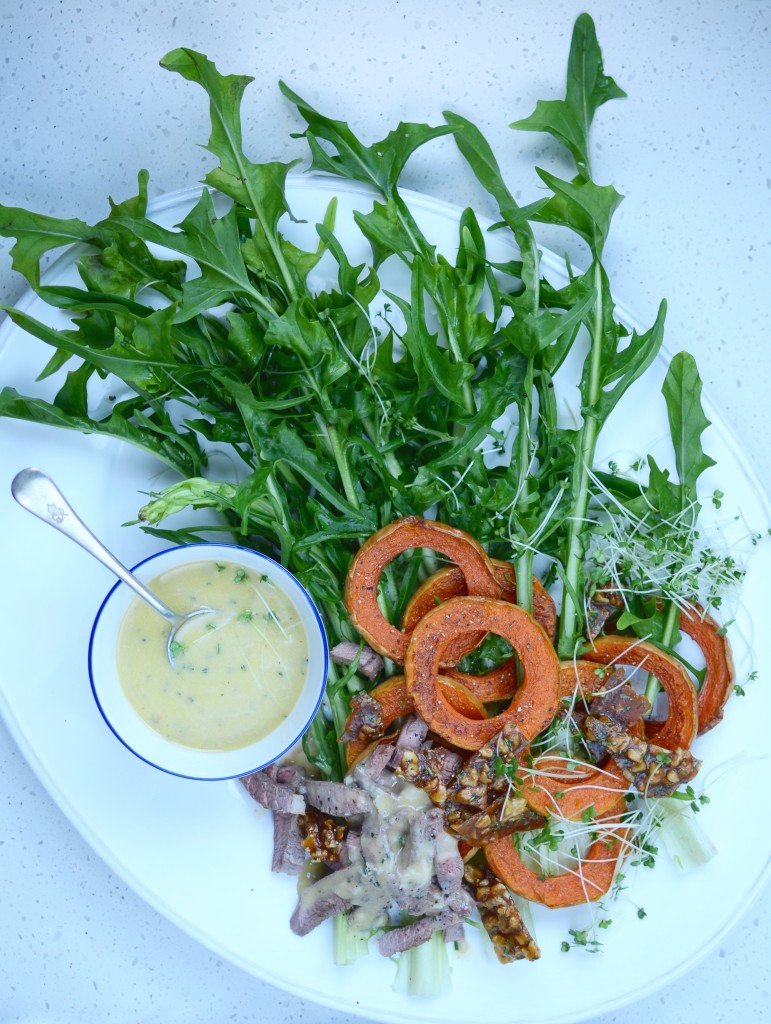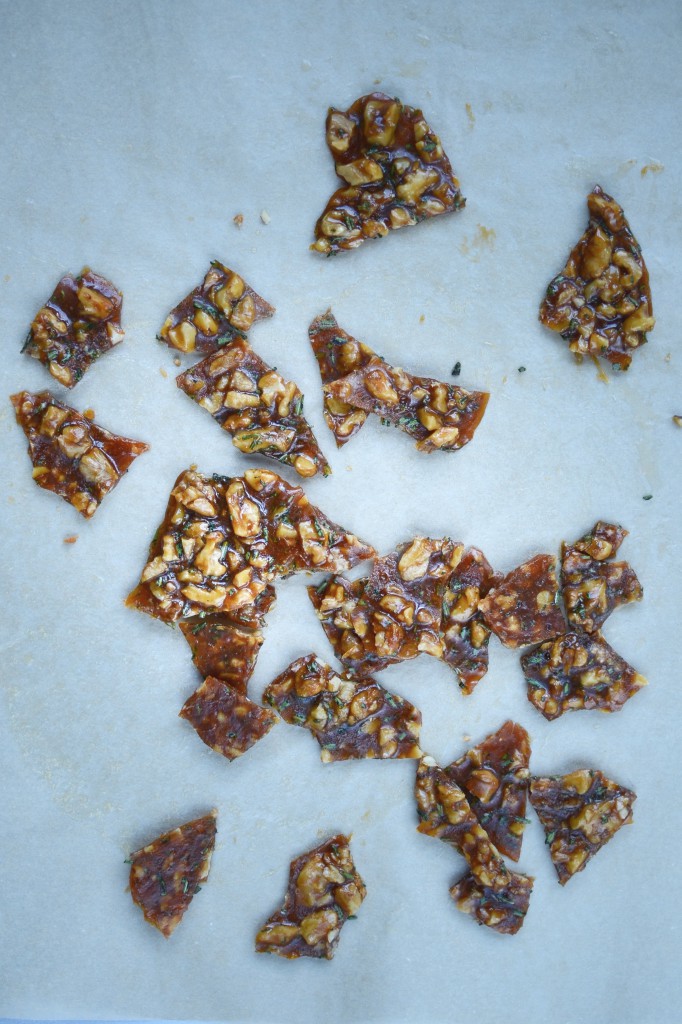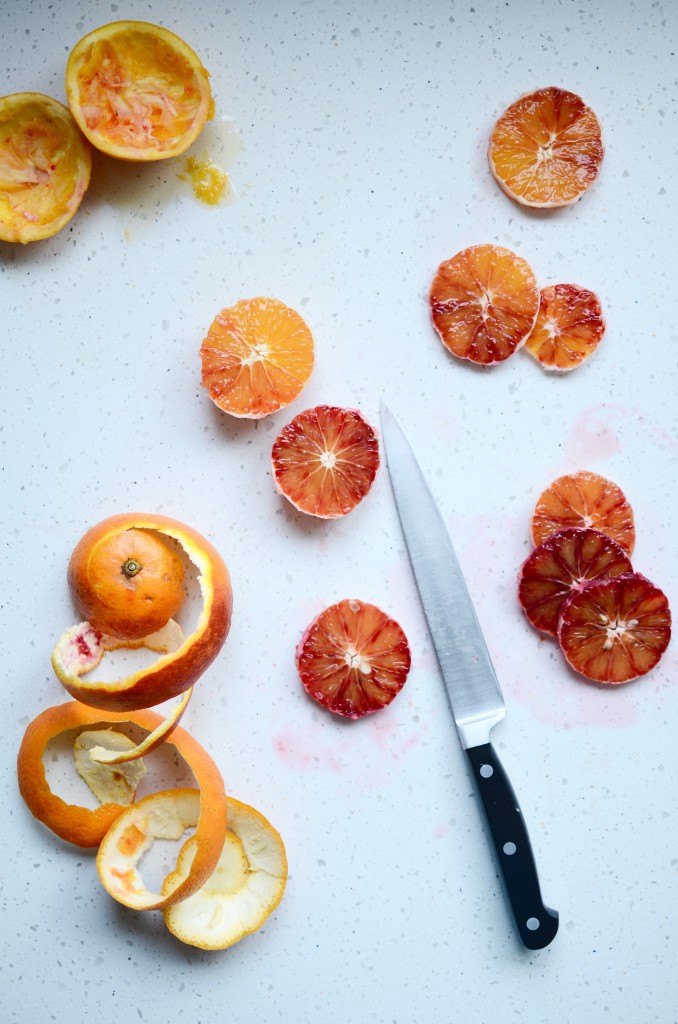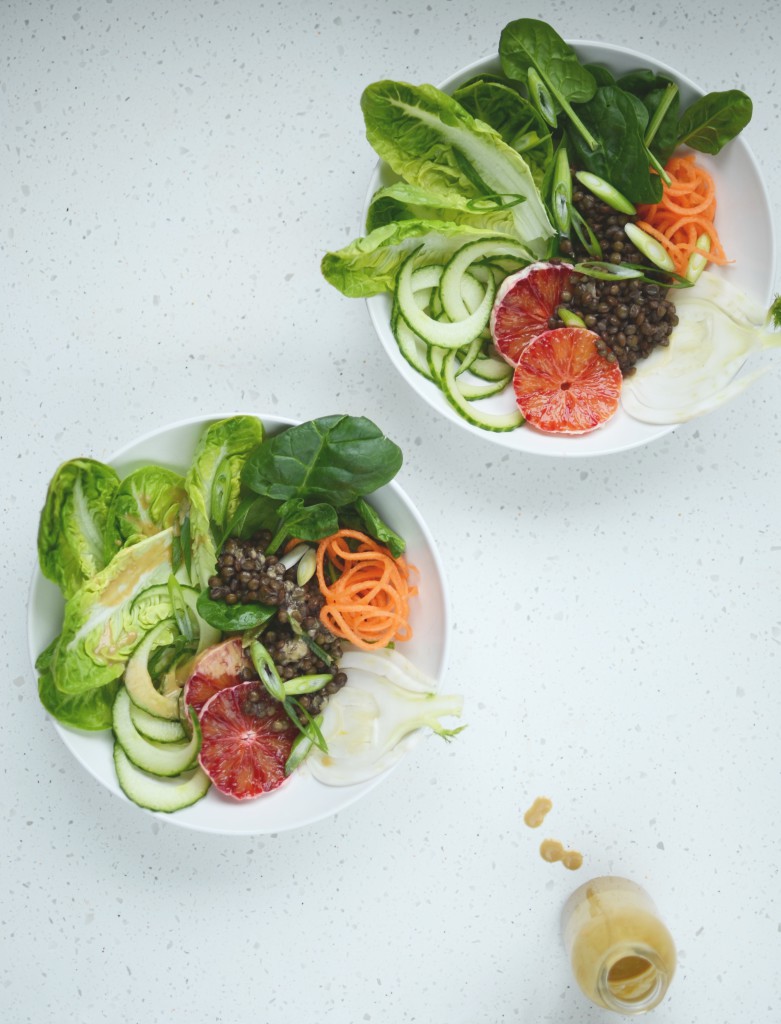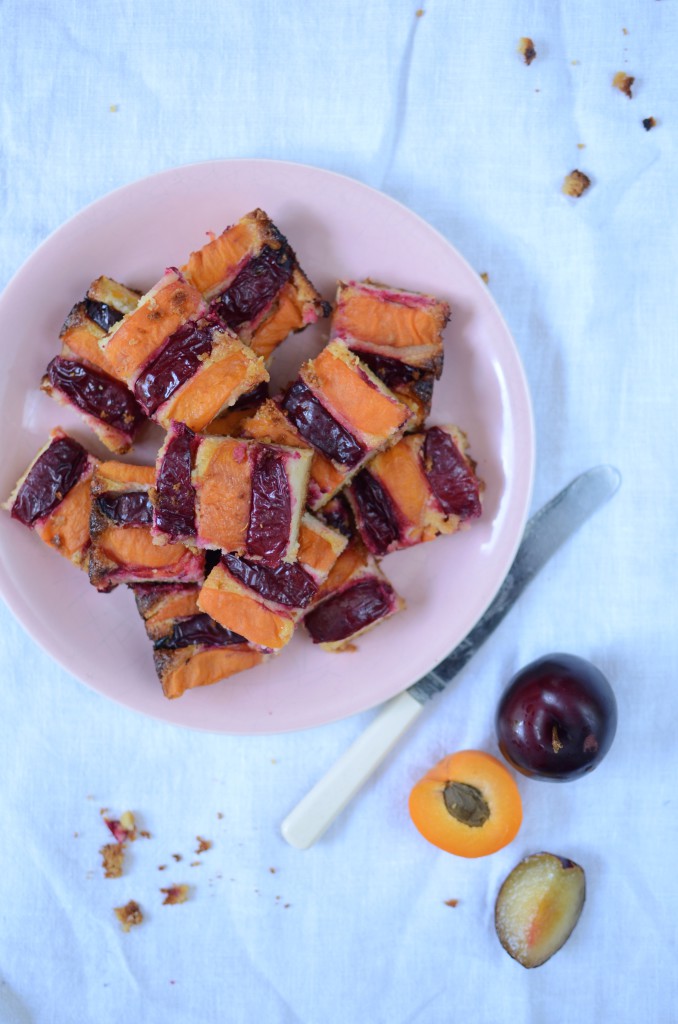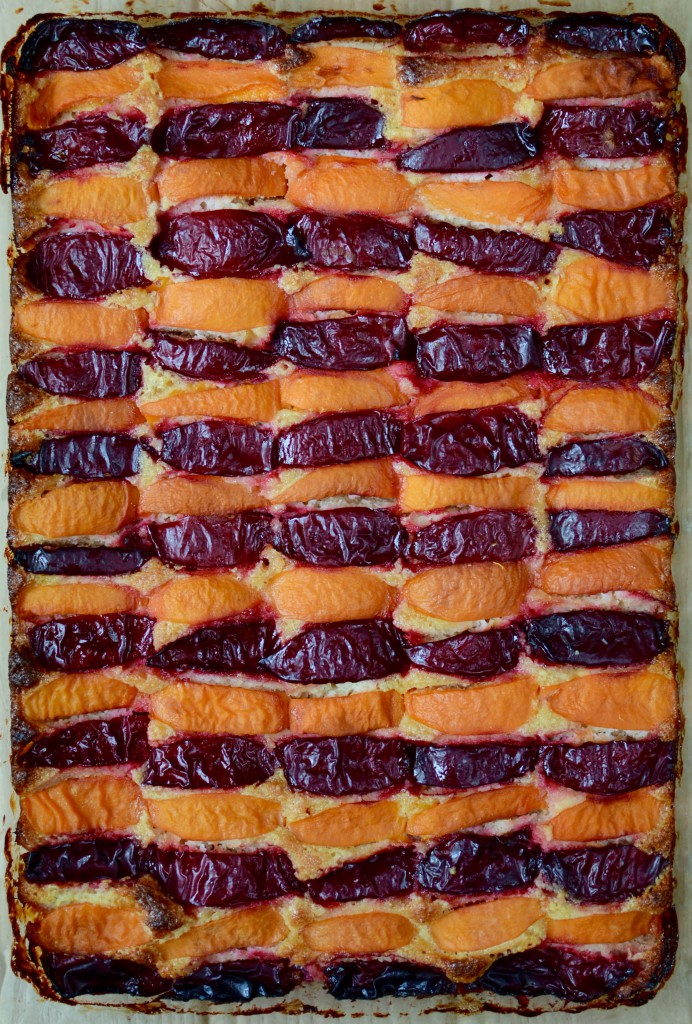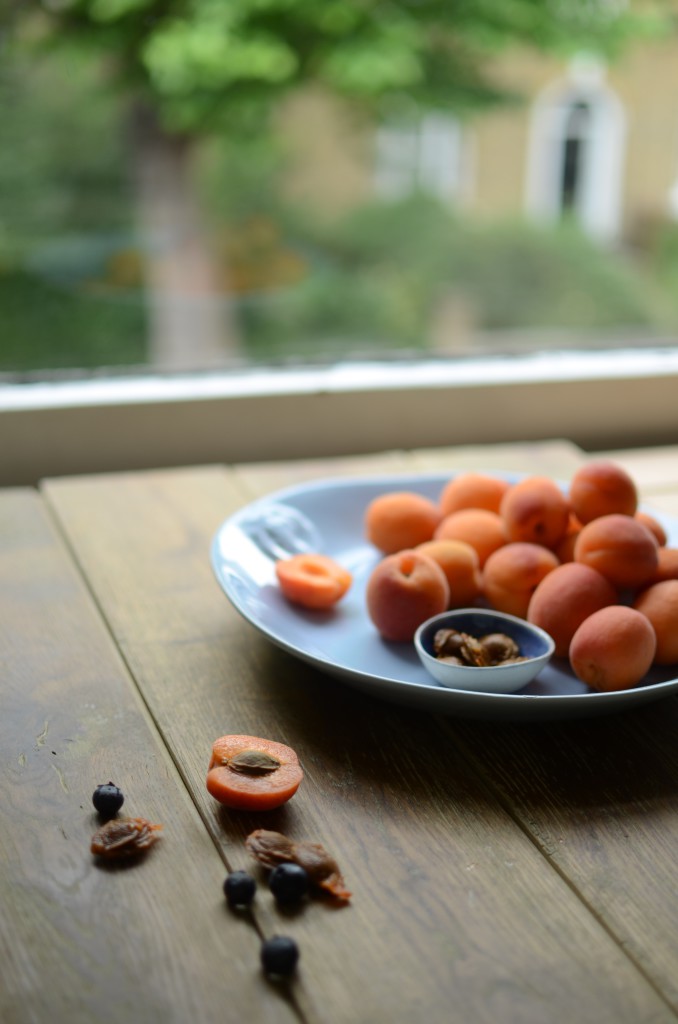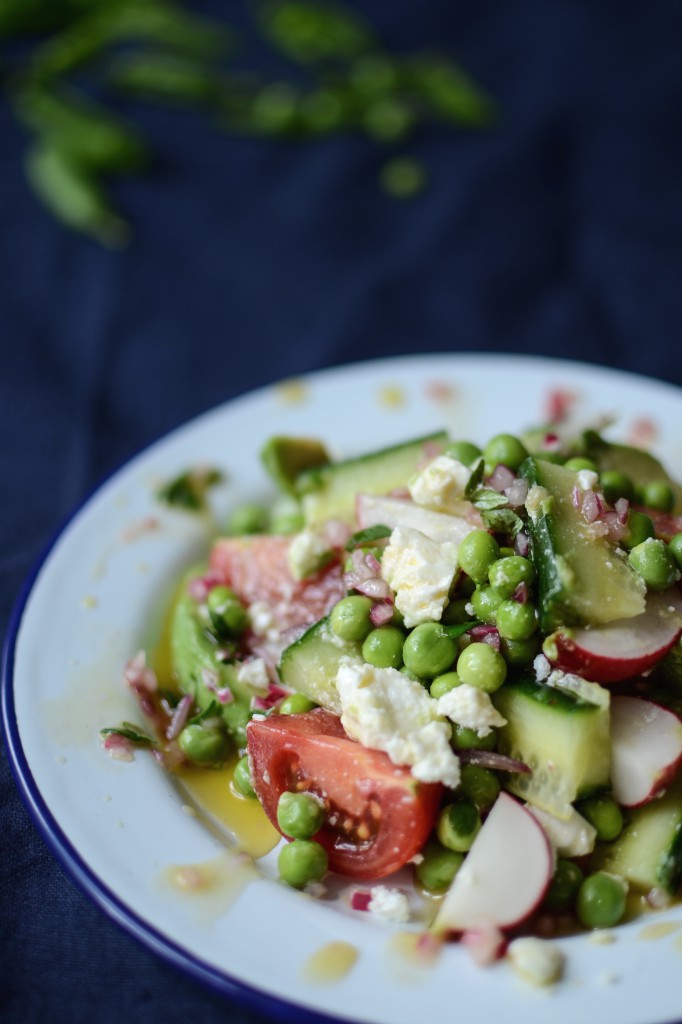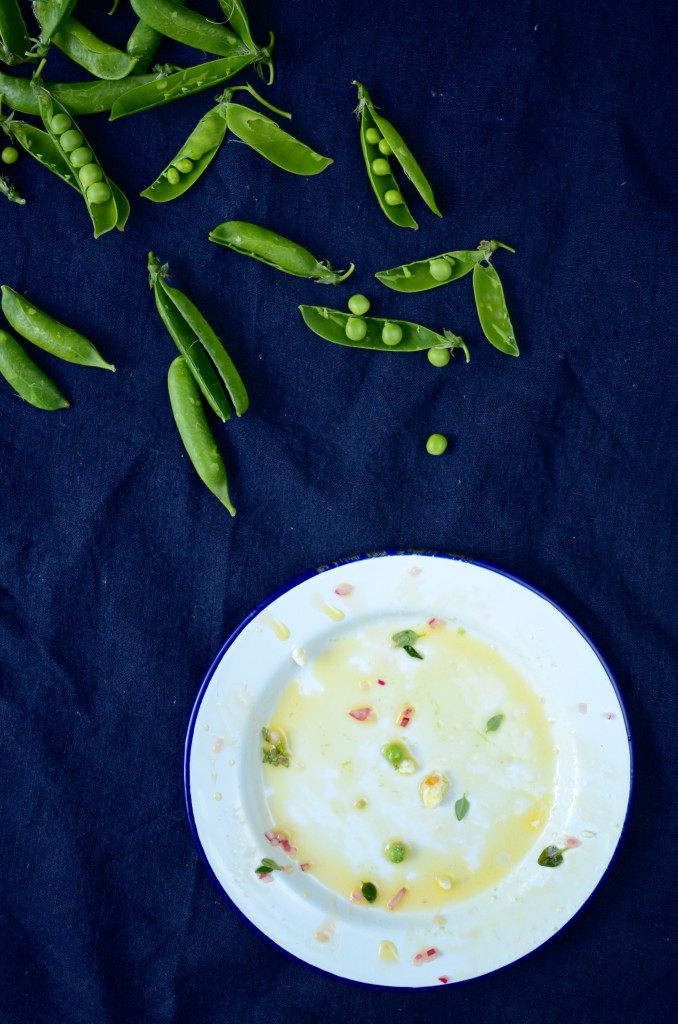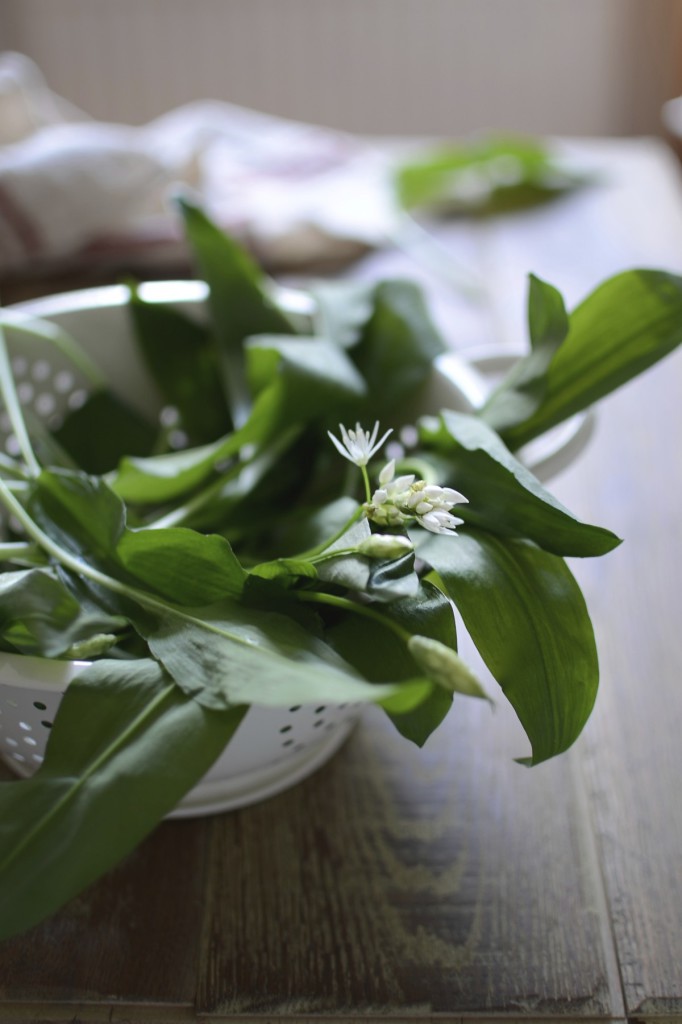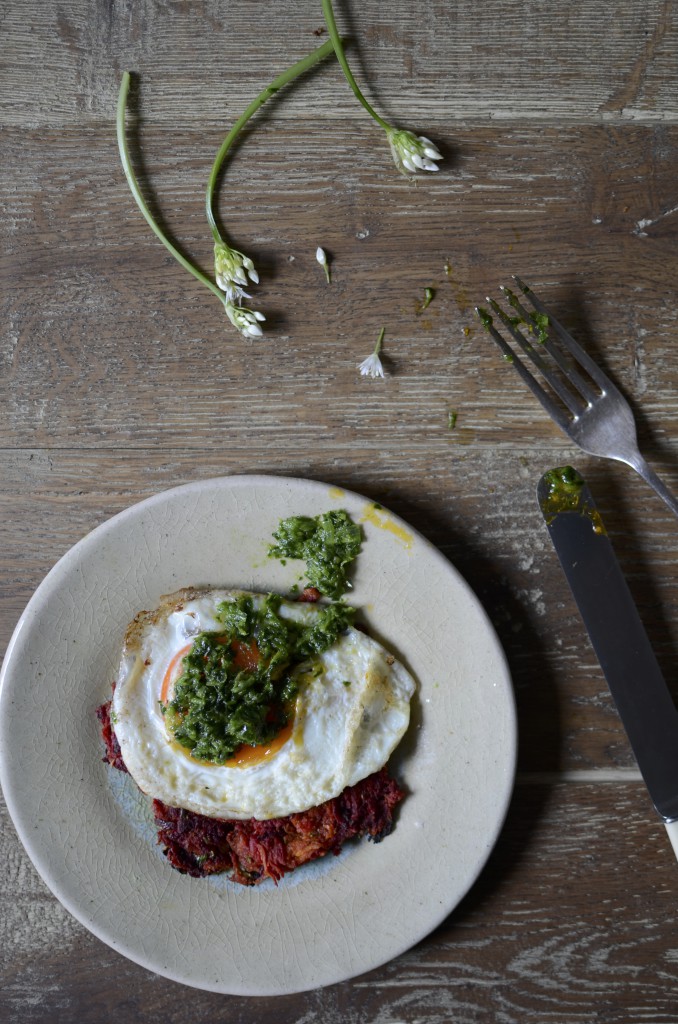Irish potato farls with chives and spring onions
Irish potato farls are a quick and easy dish to make with leftover mashed potatoes. They are delicious on their own with butter or as part of a larger meal as a bread replacement, especially a cooked breakfast. I like leaving them in the oven a little longer, to make them extra crispy on the bottom. But I know there are people who prefer them soft and pale.
Potatoes are often slated as unhealthy high-carb foods, but they contain more potassium than bananas, and they also contain fibre, vitamin C, vitamin B6, plus a bit of iron and calcium. They also contain phytonutrients like flavonoids that function as powerful antioxidants. This recipe would also be great with purple potatoes, but sweet potato mash is not “dry” enough for farls. If you’d like to use sweet potatoes or mashed pumpkin, try the South African “pampoenkoekies” instead.
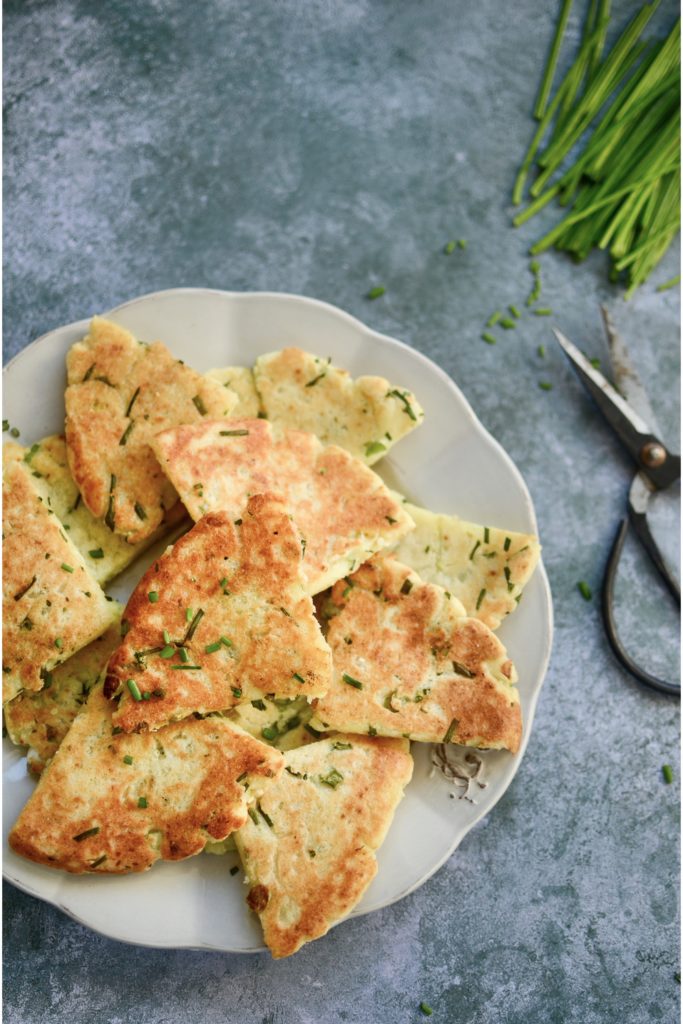
Irish potato farls
Serves 4
Ingredients
500g mashed potatoes
heaped 1/2 teaspoon salt
freshly ground black pepper
50g butter, melted
15g chives, finely snipped
3 spring onions, finely sliced
150g flour of your choice
1 teaspoon baking powder
Method
- Preheat the oven to 200°C.
- Mix all the ingredients into the mashed potatoes – use the back of your large spoon to squash the potatoes into the flour. As soon as you can no longer see any flour, use your hands to form the dough into 3 balls. You can add more flour if the mixture is too wet and a little milk if it is too dry.
- Flatten each ball with the palm of your hand and gently roll out on a lightly floured surface until about 1cm thickness. Cut the circle into quarters.
- Heat one or more small cast iron frying pans with a knob of butter each over a medium heat until hot, but not smoking. Place four quarters carefully into each of the pans and bake in the oven for 10 to 20 minutes, depending on how brown you like them. You can flip them over half-way, although we just leave them on the same side until we’re happy with the colour.
- Serve with butter or pesto and grated cheese, with a cooked breakfast or topped with your favourite sandwich toppings.
Healthy lunch box ideas
Lunch boxes take me back to my school days and the AMAZING lunches my mum used to pack for us whenever we had after school activities, and couldn’t eat lunch at home. When I moved out, first to study, then to live and work abroad, I adopted the all too common approach of regularly skipping breakfasts, grabbing something quick and ready-made for lunch, and ending the day with a very late, and very large dinner. But the traditional saying “breakfast like a king and dinner like a pauper” is proving rather accurate, as the mounting research† in favour of intermittent fasting shows.
Frontloading your calory intake to the first half of the day reduces risk factors for heart disease, cancer, obesity and diabetes. People who don’t eat large meals in the latter half of the day also tend to sleep better, suffer less digestive issues and show less signs of ageing. This, and all the research I have been reading about children performing better at school, being better behaved and less prone to falling ill when they have a healthy breakfast and nutritious lunch, has convinced me to start making an effort to pack my family some decent lunches. Here are some ideas, which I put together for the team at Compass Fostering to help inspire parents to pack a punch on the lunch box front.
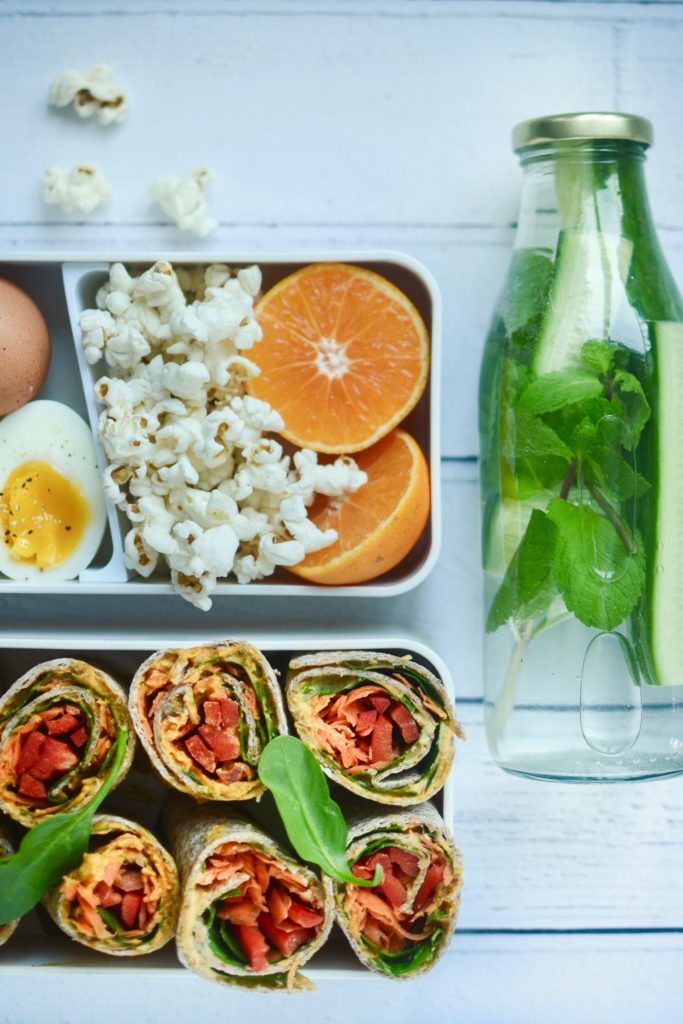
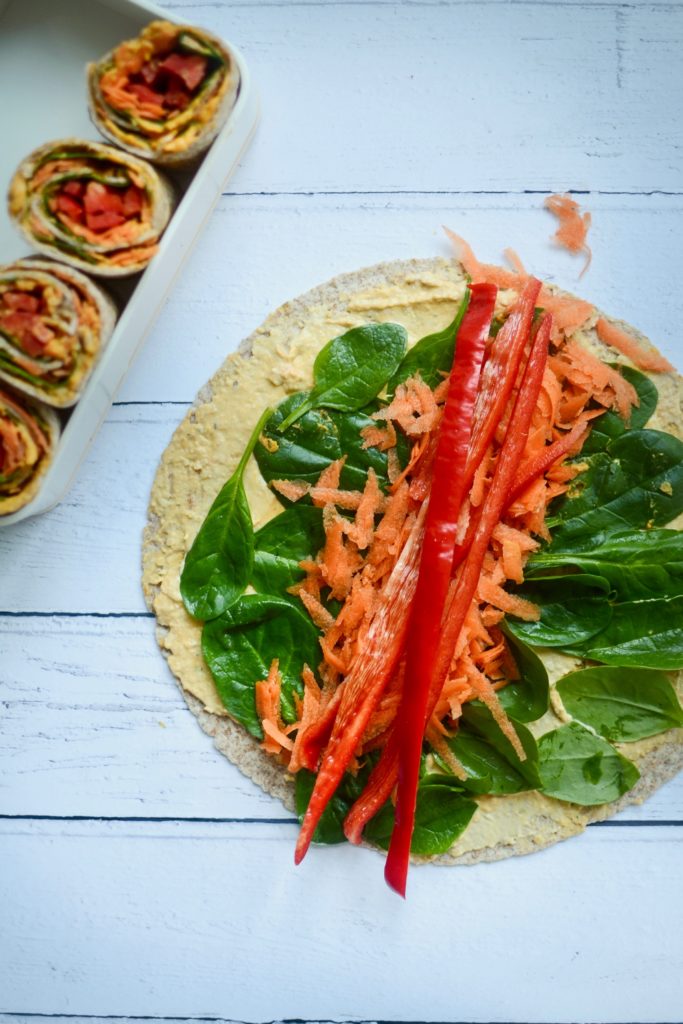
Lunch box 1
Fruit water (cucumber and mint)
Tangerine
Lightly salted popcorn
Rainbow wrap
Boiled egg
Ingredients for the rainbow wrap
wholemeal wrap or flatbread
1 – 2 tablespoons hummus or red pepper hummus
small handful baby leaf spinach
1 small carrot, coarsely grated
1/4 red pepper, cut into long strips (the long Romano variety works well here)
Method
1. Spread the hummus evenly onto the wrap, leaving a border along the top end.
2. Place the spinach leaves down in a single layer, pile grated carrot into the centre and lay pepper sticks across.
3. Fold the bottom half over the fillings, ensuring you have a tight roll, then roll upward towards the top end. Cut in half or slice into thirds.
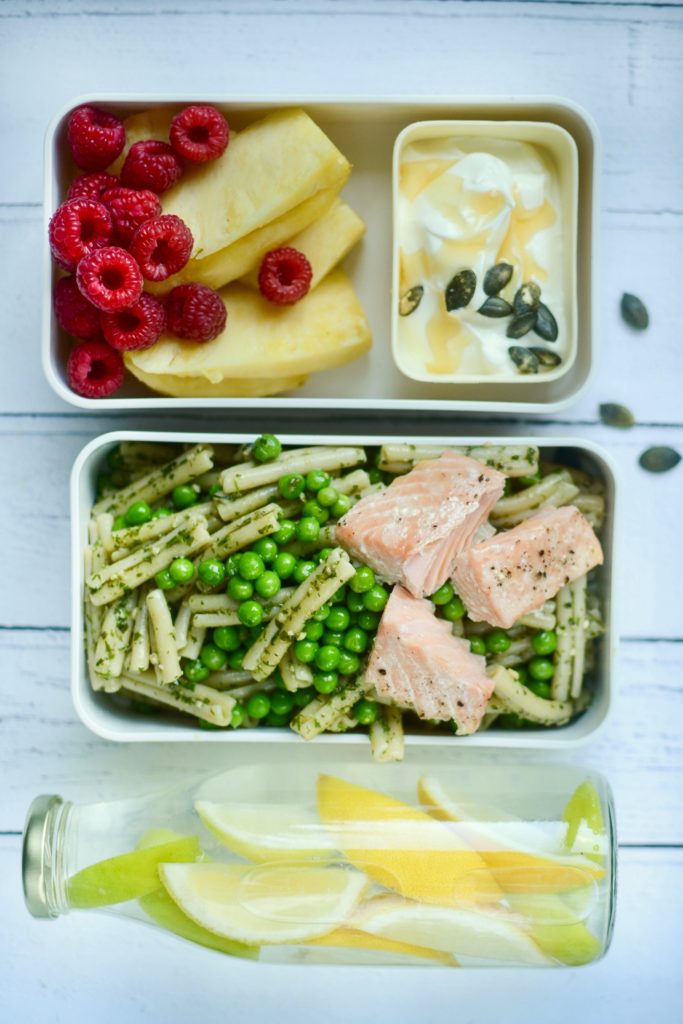
Fruit water (lemon and lime)
Pineapple wedges, raspberries
Wholemeal pesto pasta salad with salmon and peas
Natural Greek yoghurt with pumpkin seeds and raw honey
Ingredients for the pasta
medium bunch basil
small bunch dill, thickest part of stems discarded
medium bunch parsley, thickest part of stems discarded
1 small garlic clove, peeled
salt and pepper
about 80ml (1/3 cup) extra virgin olive oil
cooked salmon (left-overs work well here)
cooked wholemeal pasta (save some of the cooking liquid)
handful of frozen peas
Method
- Put the herbs, garlic, pinch of salt and black pepper in a food processor and blitz until roughly chopped.
- With the motor running, slowly add the olive oil until you reach your desired consistency (the green “pesto” sauce should be loose enough to fold into cooked pasta).
Combine the pesto with cooked pasta, cooked salmon or deboned trout, and defrosted frozen peas. - Add a little more olive oil and pasta cooking liquid if it needs it.
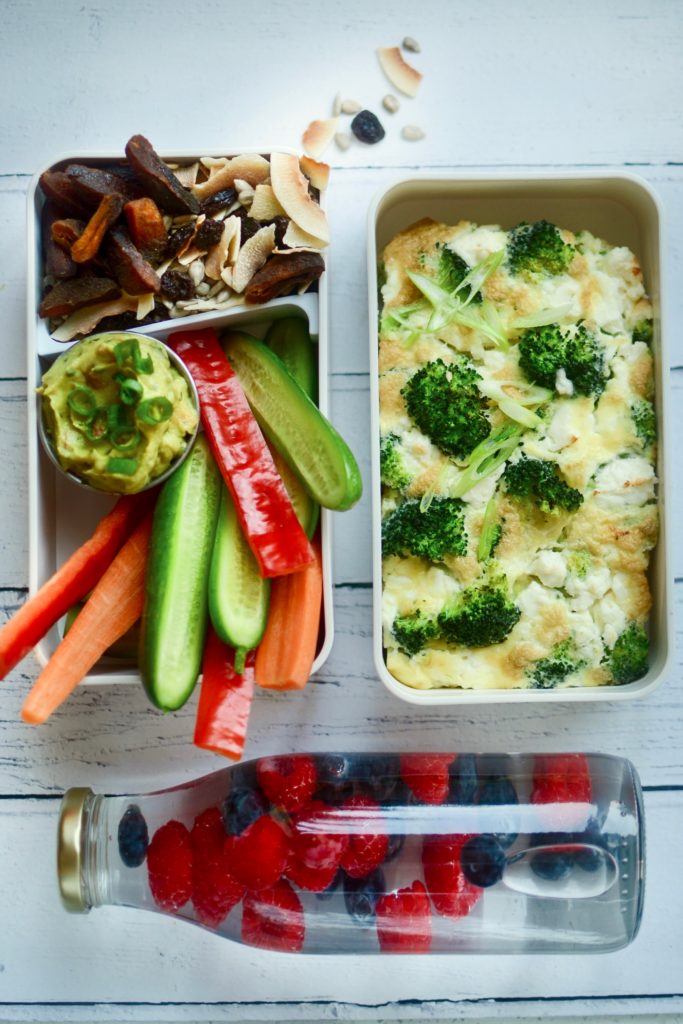
Lunch box 3
Fruit water (raspberries and blueberries)
Cucumber and carrot sticks with guacamole
Trail mix (sunflower seeds, coconut chips, chopped dates)
Mini frittata with broccoli and feta
Ingredients for the frittata
2 eggs
1 tablespoon water
small pinch of salt
freshly ground black pepper
2 spring onions, thinly sliced
small knob of butter
handful of steamed broccoli florets (left-overs are great for this) 25g crumbled feta
Method
- Whisk the eggs with the water, salt and pepper. Stir in the sliced spring onions.
- Heat the butter in a small ovenproof skillet or pan over a medium heat until sizzling, then pour the egg mix into the pan, and scatter over the broccoli and feta cheese.
- Cover the pan, turn the heat down and cook for 5 to 10 minutes or until the egg has just set.
- Pop the pan under a hot grill for half a minute if you’d like, to add some colour. Cool, turn out and slice to serve.
This post was written in collaboration with Compass Fostering. All opinions, words and images are my own.
†Intermittent Fasting: the surprising update
†Fasting: Molecular Mechanisms and Clinical Applications
Bergamot and cucumber salad
I only recently discovered my love for Earl Grey tea. Not the regular kind, mind you. It was the combination of Redbush tea from my homeland with the intoxicating aroma from the Bergamot oil that swayed me. The Bergamot orange (sometimes mistakenly referred to as a lemon) was created more than 300 years ago in Southern Italy when a sour orange was crossed with a citron/lemon/lime/Palestine sweet lime. No one is quite sure. The oil is extracted from the rind and used in Earl Grey teas, as well as fragrances, aromatherapy and to flavour dishes. Here I’ve put them to good use in a refreshing salad dressing with cucumber and blueberries. But the options really are endless…
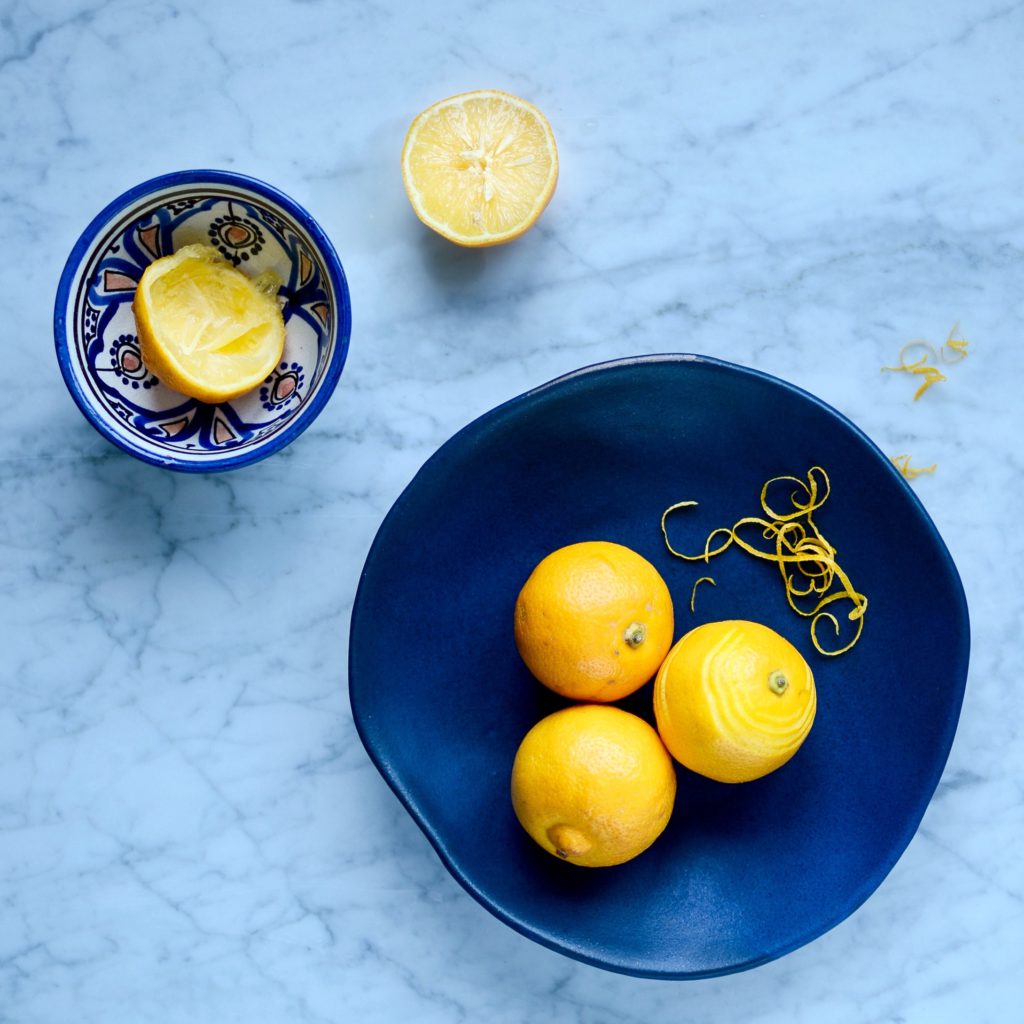
Bergamot lemon cucumber salad
If you cannot find Bergamot oranges (in season from December to February) try a combination of lemon, grapefruit and orange or tangerine, although the distinctive floral, slightly bitter flavour is difficult to replicate.
Serves 4 – 6
Ingredients for the salad
2 English cucumbers, peeled if not organic
1 punnet blueberries (about 125g), washed and halved if you prefer
a large handful of pistachio nuts, roughly chopped
Ingredients for the dressing
zest of 2 Bergamot oranges
juice of 1 Bergamot orange
80ml thick Greek yoghurt (or coconut yoghurt)
45ml (3 tablespoons) extra virgin olive oil
1 garlic clove, crushed
large pinch of unrefined rock or sea salt
1 – 2 teaspoons raw honey (or maple syrup), or to taste
small bunch of dill, leaves only, finely chopped
Method
- Thinly slice the cucumber on the diagonal and gently toss with a pinch of unrefined salt. Place the cucumber slices in a colander over a bowl or in the sink and allow to drain for at least half an hour.
- Put all the ingredients for the dressing in a jar, screw on the lid and give it a good shake until the honey is dissolved.
- Add the rest of the salad ingredients, toss with the dressing and serve immediately.
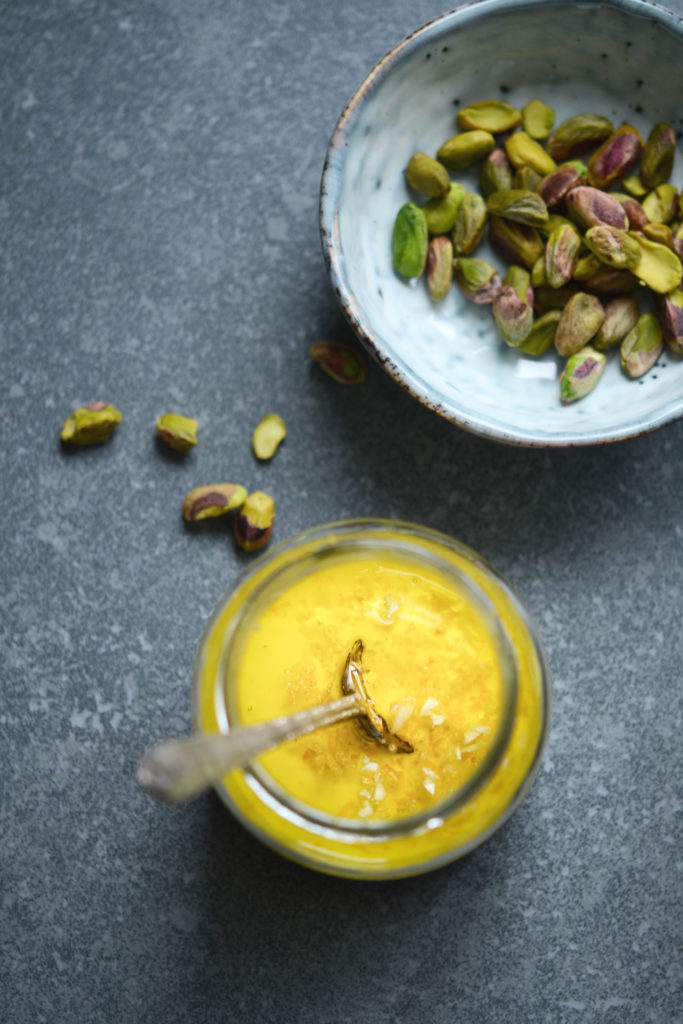
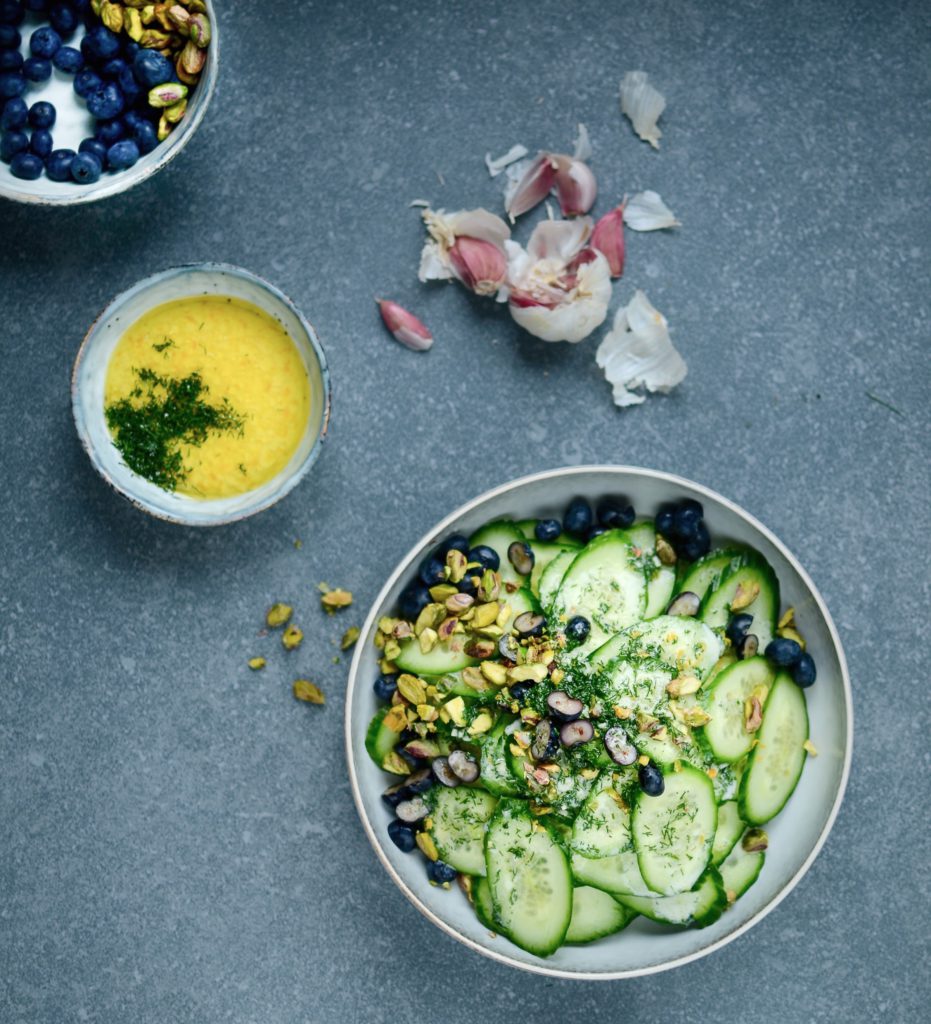
Roasted pumpkin with green sauce
I spent some time in beautiful Hamburg in my early 20’s. My neighbour opposite was also a keen cook and I remember chatting to him about his favourite local dishes (his was Steckrübeneintopf). When he asked me whether there were any particular South African specialities I loved, it took about 1 second for “Pumpkin Fritters” to leave my mouth, a little more loudly than I had intended. He was horrified. “Pumpkin? That is what the pigs eat here in Germany…” Say what?! Naturally I rose to the challenge and, once I had finally sourced a pumpkin, made him some Pampoenkoekies. I believe he was a converted man.
This dish is a lovely make-ahead option for the colder months. Use whatever squash or pumpkin you have, but it is particularly delicious with sugar pumpkin. The green sauce is very moreish and good with any type of grain or pulse-based salad. It will thicken in the fridge, but just give it a good whisk and it should be pourable.
Roasted pumpkin with green sauce
Serves 4 – 6
Ingredients for the sauce
80ml (1/3 cup) coconut milk (if using organic, stand the tin in warm water to melt the fat)
30ml (2 tablespoons) lime juice (about 2 medium limes)
1/2 teaspoon unrefined salt
1/2 small avocado
Juice of 1 tangerine
1 spring onion
large bunch (100g) fresh coriander, leaves and stalks
medium bunch (50g) fresh mint, leaves only
1 teaspoon raw honey
1 green chilli (more or less to taste), seeds removed if you prefer it less spicy
For the rest
1 fennel bulb, the tough outer layer peeled (or a couple of stalks celery)
1 spring onion, finely sliced
3 cups cooked lentils and/ or quinoa
unrefined salt
crumbled goats cheese
roasted pumpkin (I used kabocha squash, but for an extra delicious option, try sugar pumkin)
toasted pumpkin seeds
Method
- Put all the ingredients for the dressing in a blender and blend until smooth. Set aside.
- Separate the layers of the fennel bulb, then chop into small squares. Sauté in a little coconut oil until tender.
- Combine the fennel with the rest of the ingredients, dress with the dressing and serve.
Crustless courgette quiche
Zucchini. Courgette. Summer squash. Or baby marrow, as it is called in South Africa. I have a love-hate relationship with this veg. It tastes great grilled, marinated or slathered in dressing, but it is not the most nutrient dense choice, and I struggle to get it down raw (I know, I shouldn’t be admitting this, given the current zoodle fad…) And it really is a tad boring, if you’re honest. Having said that, it is a regular in my shopping basket, as its neutral taste means it is a good canvas for more exciting things, and makes it rather versatile from being grated into omelettes, breads, fritters and even brownies (check out the recipe in my book!), to featuring in beautiful sides such as a this one. Another surefire way to make the most of the humble zucchini, is this gluten- and grain-free quiche. It looks spectacular and tastes pretty darn good too.
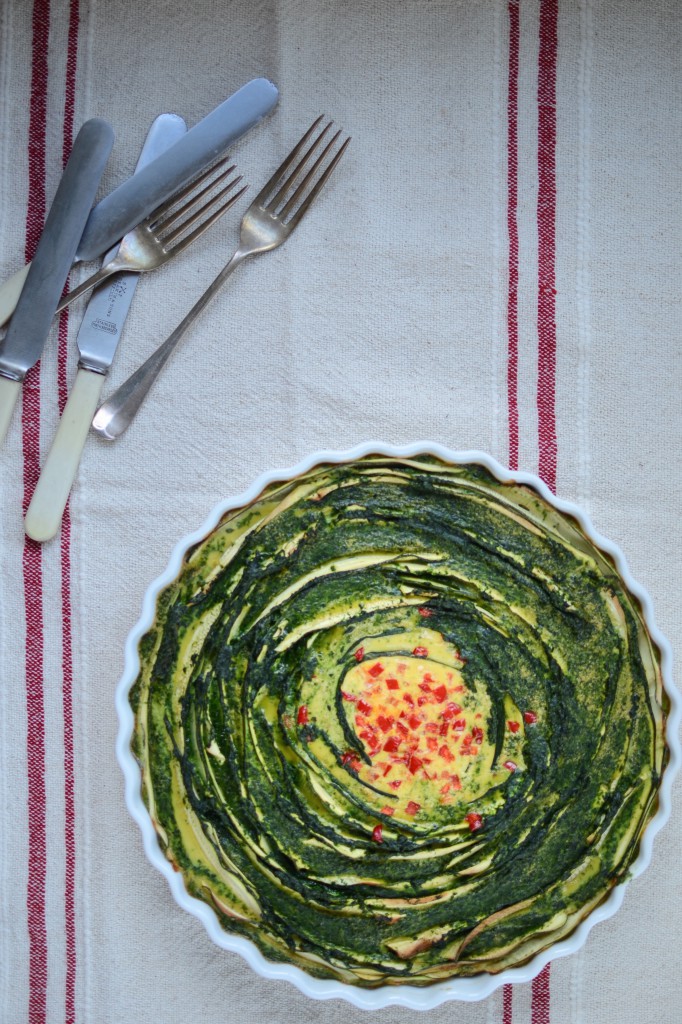
Crustless Courgette Quiche
The leek and egg mix forms a rather delicious grain-free base and helps keep the courgette slices upright. Feel free to add a large handful of good quality grated Parmesan to the filling if you like – it will make it even more delicious!
Ingredients
Knob of butter or glug of extra virgin olive oil
2 leeks, trimmed, cut in half length-wise and thinly sliced (about 250g)
1 medium onion, finely chopped
2 teaspoons mixed dried herbs such as oregano, thyme, parsley and marjoram
200g spinach
9 medium eggs, whisked
125ml (1/2 cup) milk of your choice
1 teaspoon sea salt
1/2 teaspoon cayenne pepper
4 medium courgette (about 550g), trimmed
1/3 red pepper, finely diced
soft goats cheese (optional)
Method
- Butter a 27/28cm oven-proof round dish and pre-heat the oven to 180°C/360°F.
- In a medium saucepan, sauté the leeks, onion and dried herbs with some of the salt over a low to medium heat until soft. Scrape into a bowl and allow to cool.
- In the same saucepan wilt the spinach (the water left over after washing should be enough), then remove from the heat and set aside to cool slightly.
- Use a mandolin (or a very sharp knife) to thinly slice your zucchini. Thin enough to bend, but thick enough to stand up on its side (about 3mm).
- Add 125ml (1/2 cup) of the whisked egg to the cooled leek mix. Spread this over the bottom of your buttered dish.
- Place the wilted spinach in a blender with the rest of the eggs, milk, salt and cayenne pepper, and whizz until the spinach is well blended.
- Now start placing the courgette slices into the leek “base”, starting along the edge of the dish, for stability, working your way inwards. Leave a little space between the “petals” of your rose, if possible. I steamed the slightly thicker rind pieces first, before slotting them into the rose, as they aren’t malleable enough otherwise.
- Now carefully pour the spinach egg mix in between the courgette petals, ensuring an even distribution.
- Finally scatter the little red pepper dice into the centre and bake for roughly 1 hour or until set in the centre.
- Serve with a mixed salad, soft goat’s cheese and additional red pepper dice.
Lamb steak, puntarelle and rosemary brittle
I love the Italians! Not only do they know how to live passionately, but they also rock on the green vegetable front, especially when it comes to bitter greens. One of my favourites is puntarelle or catalogna – a loose leafed variety of chicory favoured by most Romans, also referred to as Catalonian or asparagus chicory. The word “puntarelle” actually refers to the pale green inner stalks that have asparagus-like tips, whilst the outer leaves are similar to dandelion both in taste (they are very bitter!) and appearance. If you would like a step-by-step tutorial on how to prepare this vegetable, Nick Anderer explains it all here. For a quick overview, I’ve included the steps below. This fabulous vegetable is only in season in the colder months, but with Easter a little earlier than usual, perhaps this salad will still be a possible addition to your festive feast! It will be equally good with dandelion greens, chicory and radicchio, however, if you cannot find puntarelle.
Lamb steak, puntarelle and rosemary brittle
Ingredients for the salad
2 lamb steaks
splash of extra virgin olive oil
2 – 3 sprigs of rosemary
2 – 3 large garlic cloves, peeled and sliced
1 butternut or coquina squash, cut into rings and roasted until tender
1 head of puntarelle
Ingredients for the brittle
85g (just under 1/2 cup) unrefined brown sugar
50g (1/2 cup) chopped walnuts
15g (1 tablespoon) unsalted butter
1 tablespoon finely chopped fresh rosemary
1/2 teaspoon course ground sea salt
Ingredients for the dressing
2 cloves garlic
1/2 teaspoon coarse sea salt
1 tablespoon finely chopped fresh rosemary
5 – 6 marinated anchovies, drained
30ml (2 tablespoons) mayonnaise (preferably home-made)
80ml (1/3 cup) extra virgin olive oil
30ml (2 tablespoons) fresh lemon juice
Method
- Rub a little olive oil into the meat, then place into a shallow glass dish and press the rosemary and garlic on top. Allow to marinade for a couple of hours, then remove the rosemary and garlic, season with salt and pepper, and fry on a griddle until cooked to your liking. Set aside to rest for 10 minutes before slicing.
- For the puntarelle:
- Fill a large bowl with ice water and set aside. Strip away the dark green outer leaves – you will only need a handful of these to add to the salad. Use a sharp paring knife to separate the pale green core into its individual stalks, then thinly slice each lengthwise before dropping the slivers into the ice water. They need to soak for at least 45 minutes to achieve the traditional curly crispness that puntarelle is loved for.
- For the brittle:
- Line a large baking sheet with greaseproof paper.
- Place the sugar in a medium heavy saucepan over medium high heat and stir with a wooden spoon until sugar begins to melt. Lower the heat a little and keep stirring until all the sugar has melted.
- Now leave it to cook untouched until it is a dark caramel colour – you should be able to smell it. Stir in the walnuts and butter, and allow to cook for another couple of minutes, stirring constantly, or until the butter is incorporated.
- Stir in the rosemary and salt, then scrape the mixture out onto the prepared baking sheet. Spread it evenly to the desired thickness with a wooden spoon or stiff rubber spatula. Allow to cool completely (roughly one hour) then break it into pieces. You will probably have slightly more than you need for this salad, but the rest can be stored in an airtight container at room temperature and will keep a few days.
- For the dressing:
- Place the garlic and coarse salt in a mortar and grind into a paste.
- Add the rosemary and continue to grind until it is well mixed and resembles a speckled pulp.
- Add the anchovies and repeat until you have a thick paste.
- Now slowly whisk in the olive oil until it is incorporated, followed by the mayonnaise and lemon juice.
- To assemble your salad, combine the sliced lamb, roughly chopped puntarelle greens, drained and dried puntarelle stalks and roasted squash, and toss with enough dressing to coat. Scatter over the brittle and serve immediately.
A winter salad with blood orange and lentils
I’m not sure that I agree with a strict interpretation of the whole “New Year Detox” thing. At least not if you live in the Northern hemisphere. Sure, cut down on portion sizes and avoid sweet things if you overdid it during the festive season. But why deny yourself warming, filling and indulgent food when it is bound to be cold, dark and wet most of the time? And on the days you do crave something a little fresher, a little bit brighter, a salad such as this one will hit the spot while keeping the winter chills at bay.
Blood oranges are such a treat in the colder months and add a sense of drama to any dish. Before juicing the halves for the dressing, I cut off one slice and add this, with the skin still on, to the blender. This, and the tahini, add a delicious bitterness to the salad, which I find particularly appealing, but feel free to omit it. If you struggle to find the shichimi togarashi spice blend for the dressing, you could make your own by combining 2 tablespoons of chilli flakes, 1 teaspoon coarsely ground sichuan (or black) peppercorns, a tablespoon each of white and black sesame seeds, and dried tangerine or orange peel, 2 teaspoons of ground ginger, and lastly 2 tablespoons of seaweed (nori, wakame flakes or arame). Also remember, when consuming raw spinach, to include foods in the meal that are high in vitamin C (such as blood oranges), as it helps with assimilation of the iron and blocks the oxalate from binding to calcium, encouraging further absorption.
Lentil and blood orange salad
Serves 2 – 4
Ingredients for the dressing
1 blood orange, 1 slice and the rest juiced
80ml (1/3 cup) extra virgin olive oil
15ml (1 tablespoon) tahini
30ml (2 tablespoons) rice vinegar
15ml (1 tablespoon) naturally fermented shoyu or soy sauce
1 tablespoon maple syrup
squeeze of lemon
pinch of sea salt
shichimi togarashi (Japanese 7-spice blend) to taste
Ingredients for the salad
100g (about 1 cup) cooked puy lentils
2 large handfuls of greens, including baby spinach
1/2 large cucumber, sliced
2 blood oranges, peeled and sliced
1 large carrot, grated or thinly sliced
1/2 medium fennel, grated or thinly sliced
2 spring onions, thinly sliced
Method
- Blend together all the dressing ingredients. If you don’t own a high-speed blender, do not add a slice of orange with the peel on, as it will not be ground up smoothly enough. Instead, add some grated zest. Adjust seasoning, ensuring a lovely balance between salty, bitter, sweet and sour.
- Just before serving, toss together the warm lentils, the rest of the salad ingredients and enough dressing to coat.
Stone fruit slices
The memories of my primary school years are punctuated by gloriously colourful events, much-loved traditions, lessons learnt the hard way, meaningful moments… And Maike’s mum’s weekly apricot tray bake. It will forever crop up in my mind as the most delicious treat anyone could wish for. It perfectly captured the balance between soft and chewy, tart and sweet. And it looked and tasted like the summer sun.
Rather than being a cake, this recipe really is more of a nutritious snack that I happily give my children after school and help myself to during busy mornings catching up on admin and work. The end result relies to a large extent on the taste and quality of your fruit, but even so, it is a good way to use up over-ripe, squooshy apricots and plums.
Stone fruit slices
Ingredients
3 medium eggs, at room temperature and separated
80ml (1/3 cup) oil (coconut oil, macadamia nut oil or melted butter)
80ml (1/3 cup) honey
1/2 teaspoon good quality almond extract
pinch of sea salt
finely grated zest of 1 lemon
230g (about 2 1/3 cups) ground almonds / almond flour
750g large apricots and small’ish plums (about 6 of each), halved, stones removed and sliced into eighths
Method
- Whisk together the egg yolks, oil, honey, almond extract, salt and lemon zest.
- Stir in the ground almonds and set aside.
- Preheat the oven to 180°C/360°F.
- Whisk the egg whites to firm (but not stiff) peaks, and gently fold into the almond mixture.
- Spread this mixture out in an even layer in a greased ovenproof baking dish (about 30 x 20 cm).
- Place the fruit slices skin-side up as close together as possible in the thin layer of batter – alternating the fruit as you go along. You could also use apricot halves only, which would be much quicker and easier, but not as pretty.
- Bake in the oven for 30 minutes, then turn the oven off and leave the cake in the oven for another 15 minutes, before removing and allowing to cool.
- Cut the cake into squares in the dish, then carefully slide an offset spatula under each row to carefully lift them out.
- Store in the fridge for several days or freeze.
Freshly podded pea salad
There is nothing quite like freshly podded peas in the early summer months. They are sweet, crunchy and utterly delightful. My little ones adore the process of shelling the peas and then popping them in their mouths, one by one. But don’t let the taste and sensory delight be the only reason you add these tiny gems to your meals. Green peas are rich in protein, fibre, vitamins A, B, C, E & K, and anti-oxidants. They also contain a number of anti-inflammatory phytonutrients not found anywhere else. Later in the season the peas become bigger and starchier, so no longer ideal as a raw snack, but still a wonderfully tasty and nutritious ingredient in many cooked dishes such as minestrone or wilted lettuce.
Serves 2 – 4
Ingredients for the dressing
15ml (1 tablespoon) red wine vinegar
45ml (3 tablespoons) extra virgin olive oil
1 tablespoon finely chopped red onion
1 tablespoon tender thyme leaves
generous pinch of sea salt
Ingredients for the salad
140g (just under a cup) freshly podded peas (about 400g of peas in the pods)
4 vine-ripened capri tomatoes, quartered
1/4 English cucumber, cut into chunks and then sliced
4 large radishes, quartered
1 small ripe avocado, sliced
60g sheep or goat milk feta, crumbled
Method
- For the dressing: put all the ingredients into a small jar, screw on the lid and give it a good shake. Set aside.
- Combine all the ingredients for the salad in a medium mixing bowl, sprinkle a little sea salt on the avocado slices, then pour over about half to 2/3 of the dressing and toss gently. Serve immediately.
Wild garlic and leek sauce
I love greens and the spear-shaped wild garlic leaves (or ramsons and ramps) are no exception. This pungent member of the allium ursinum family is a wonderful combination of onion, garlic, spring onion and chives, with the added bonus of growing quite abundantly in woods and hedges during the spring months. The leaves can be quite stringy, so I often chop them up finely or process them, cooked or raw. The tiny white flowers are edible too and make for a beautiful garnish. This sauce will surprise you with its complexity, yet comforting more’ishness. Enjoy it with egg dishes (such as the fried egg and beetroot rösti below), stirred through pasta or risotto, and with any combination of cheese and carbs you can think of.
Ingredients
1 medium to large leek (about 200g), trimmed, cut in half lengthwise, sliced and washed
1 – 2 medium cloves garlic, roughly chopped
1 bunch wild garlic (about 100g)
1 medium bunch parsley (about 50g), thickest part of stalks discarded
sea salt
125ml (1/2 cup) extra virgin olive oil
squeeze of lemon juice to stir through just before serving
Method
- Fry the leek and garlic in a little butter (or olive oil, if you keep the temperature nice and low) until tender and caramelised.
- Add the wild garlic and stir until wilted. Remove from heat.
- In a food processor, blitz all the leek mix and the parsley until finely chopped.
- With the motor running, add the olive oil in a steady stream through the chute. Add salt (and perhaps some freshly ground black pepper) and taste.
- At this stage I usually divide the sauce between two jars and freeze one of them. Add a squeeze of lemon juice to the other and have with pasta, egg dishes, mashed potatoes or anything cheesy.

